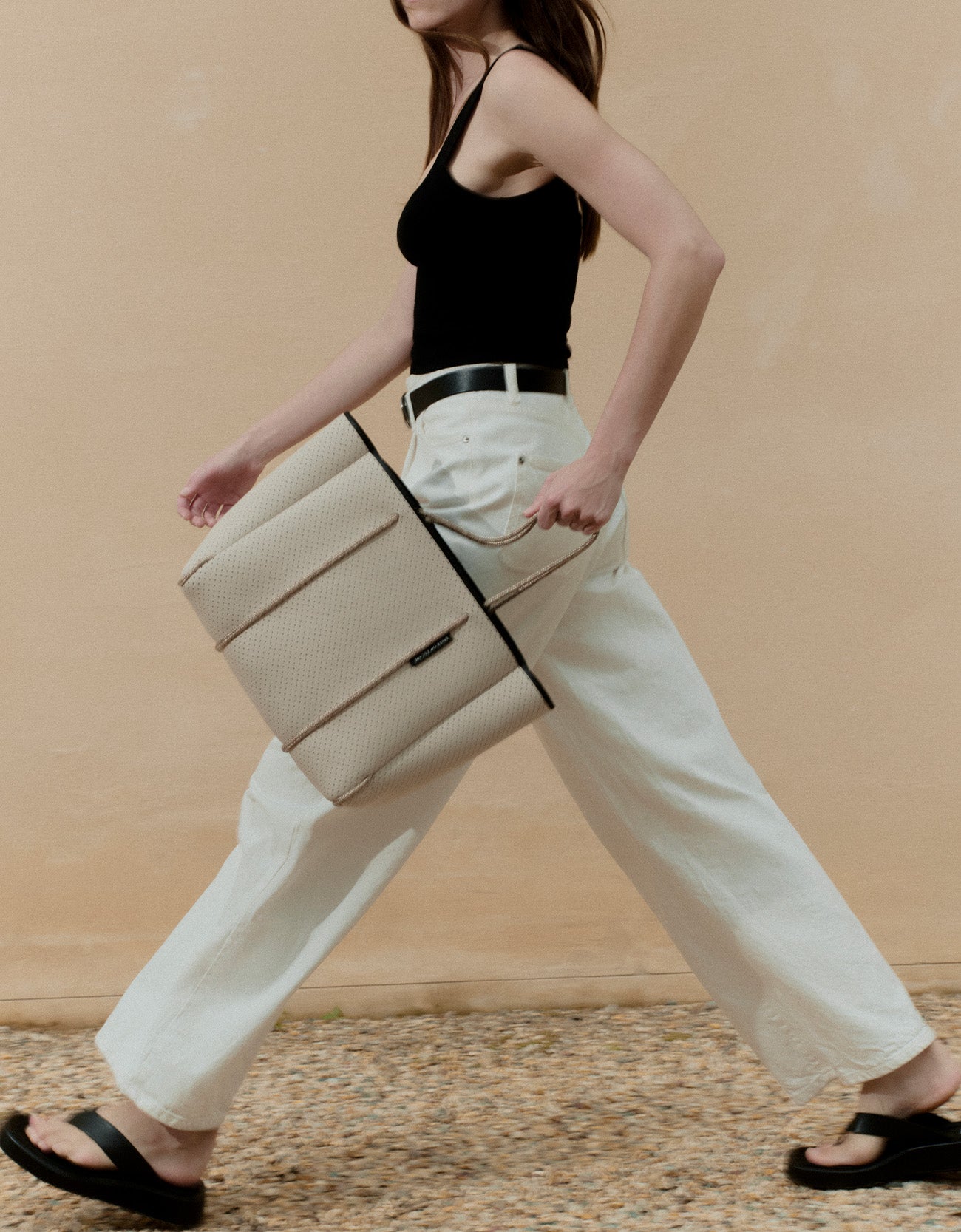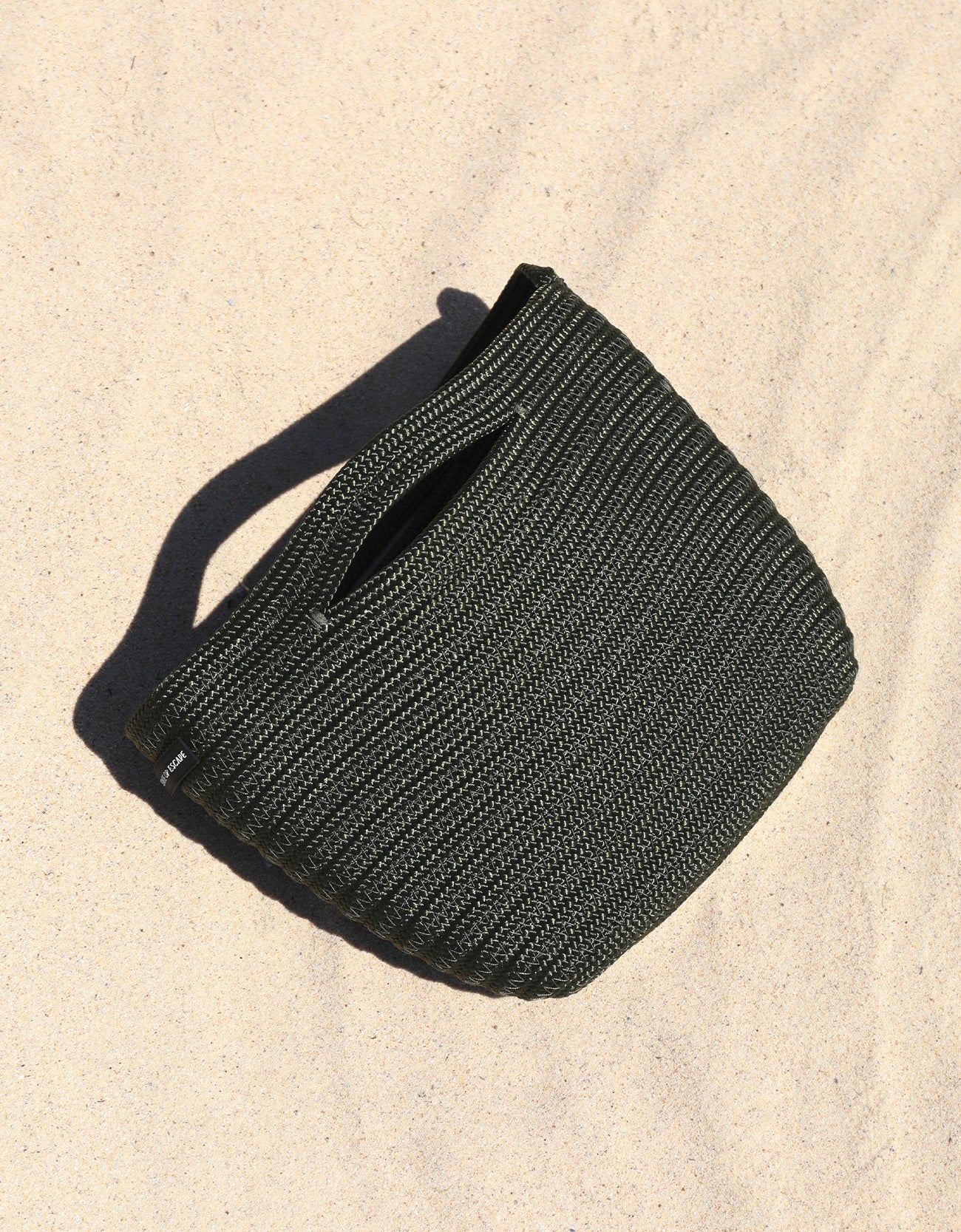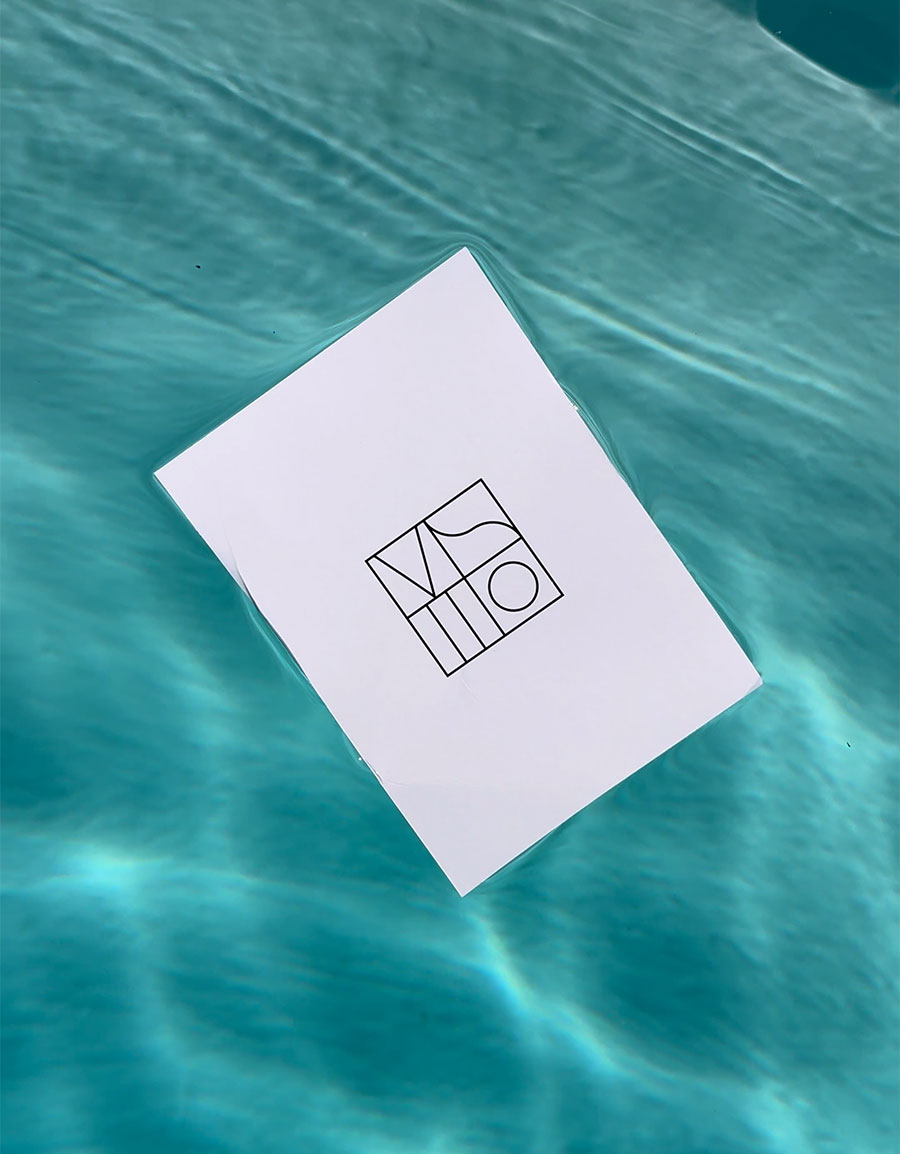Art from the ocean’s perspective with artist Gemma Rasdall.
Art from the ocean’s perspective with artist Gemma Rasdall.
Living a board her yacht and traveling from coast to coast, currently in France, artist Gemma Rasdall left her textiles design job to pursue her long-time love affair with art. Selected as a finalist for the Wynne Prize at the Gallery of NSW, Gemma seeks inspiration from her oceanic surroundings, while using recycled sails as a part of her art’s composition.
First and foremost, it’s amazing that you live on a yacht, how long have you lived at sea and why have you chosen this way of living?
I’ve lived aboard my boat Frida for 4 years or so now. She is a 35ft Niagara sailing yacht originally from Canada. I grew up sailing and boats have always been a part of my life. When I was looking to quit my full-time design job to pursue my art, I decided I needed a more affordable way to live. One that ideally enabled me to immerse myself in the landscape that I paint…. So, living on a boat seemed like the perfect solution.
I originally moored my boat in Balmain and painted from a studio in Stanmore but after a year decided to sail north to Pittwater. Frida is currently moored off Scotland Island and I have a little bush studio on the island. I love the flexibility of being able move your home anywhere. I move around the bays of Pittwater and Hawkesbury River to seek solitude (minus the company of my boat dog Arkie) and inspiration for new paintings.
Boat life has brought me closer to what is most important to me: living close to nature, being creative and constantly learning.
First and foremost, it’s amazing that you live on a yacht, how long have you lived at sea and why have you chosen this way of living?
I’ve lived aboard my boat Frida for 4 years or so now. She is a 35ft Niagara sailing yacht originally from Canada. I grew up sailing and boats have always been a part of my life. When I was looking to quit my full-time design job to pursue my art, I decided I needed a more affordable way to live. One that ideally enabled me to immerse myself in the landscape that I paint…. So, living on a boat seemed like the perfect solution.
I originally moored my boat in Balmain and painted from a studio in Stanmore but after a year decided to sail north to Pittwater. Frida is currently moored off Scotland Island and I have a little bush studio on the island. I love the flexibility of being able move your home anywhere. I move around the bays of Pittwater and Hawkesbury River to seek solitude (minus the company of my boat dog Arkie) and inspiration for new paintings.
Boat life has brought me closer to what is most important to me: living close to nature, being creative and constantly learning.
"Boat life has brought me closer to what is most important to me: living close to nature, being creative and constantly learning."
"Boat life has brought me closer to what is most important to me: living close to nature, being creative and constantly learning."
Congratulations on being selected as a finalist in the 2022 Wynne Prize at the Art Gallery of NSW, what an incredible achievement. What does this selection mean to you and what was the lead up to preparing and painting for this prize.
My finalist selection came as a complete surprise and it has been so thrilling to see my painting hung on the wall alongside my art heroes in the Art Gallery of New South Wales. For years I have had a scrap of paper stuck on my studio wall reading ‘Get hung in the Wynne prize’ as a career goal but never quite imagined achieving it. The art world is ambiguous and like any creative industry wrought with instability and rejection, so to be recognised by a major institution such as the AGNSW is a pivotal step in my path ahead as an artist.
In preparing for the Wynne Prize, I decided to focus on creating a painting that told a story that audiences could engage with. Inspired by the beautiful landscape of my home, this story focused on the residents who live here and their perspectives of the water. Sketch book in hand, I visited many neighbours balconies to draw their view, making notes of weather conditions and compass bearings. These sketches then became tiny paintings made in watercolour and gouache that were assembled into large grid composition.
Titled ‘Framed By Life Offshore’ this work is my love letter to the beautiful community of Scotland Island.
Congratulations on being selected as a finalist in the 2022 Wynne Prize at the Art Gallery of NSW, what an incredible achievement. What does this selection mean to you and what was the lead up to preparing and painting for this prize.
My finalist selection came as a complete surprise and it has been so thrilling to see my painting hung on the wall alongside my art heroes in the Art Gallery of New South Wales. For years I have had a scrap of paper stuck on my studio wall reading ‘Get hung in the Wynne prize’ as a career goal but never quite imagined achieving it. The art world is ambiguous and like any creative industry wrought with instability and rejection, so to be recognised by a major institution such as the AGNSW is a pivotal step in my path ahead as an artist.
In preparing for the Wynne Prize, I decided to focus on creating a painting that told a story that audiences could engage with. Inspired by the beautiful landscape of my home, this story focused on the residents who live here and their perspectives of the water. Sketch book in hand, I visited many neighbours balconies to draw their view, making notes of weather conditions and compass bearings. These sketches then became tiny paintings made in watercolour and gouache that were assembled into large grid composition.
Titled ‘Framed By Life Offshore’ this work is my love letter to the beautiful community of Scotland Island.
Where did your artistic journey start and where did your passion for art come from?
I was very lucky to grow up with an art teacher for a mother so I’ve been creating ever since I can remember. My childhood was filled with hand making cards, after school art classes, holiday workshops, days off school to visit galleries and constant encouragement to play and make a mess with every art material available. So, my passion for art was instilled by mum and everything I have learnt and use in my practice I credit to her.
Did you always imagine yourself to be an artist?
No, originally I thought my dream job would be interior yacht design! But as I finished school, I went on to study a Bachelor of Design at UNSW, majoring in textiles and graphics. After working in the industry for a few years I was struggling with lack of creative freedom and was dedicating most nights and weekends after work to paint to satisfy the itch. Eventually my painting became bigger than a side project, so I left full time work to pursue my own art.
What is it about the sea that inspired you?
The ever-changing light, colour and movement of the sea never ceases to amaze me. Living on my yacht means I am constantly a part of this change, I could sit on deck and watch the ocean all day and never get bored. It’s fills me with an overwhelming sense of calm that soothes life’s anxieties and makes room for creative magic.
It says in your bio that your work pushes the boundaries of landscape structures, could you expand on this and talk us through your process and where an idea may start from?
I use unusual materials and perspectives in order the challenge traditional landscape structures. Back in my final year of school I began experimenting with using recycled sailcloth as a canvas to paint on as I had an old ‘Flying Eleven’ sail lying around. I’m still using this technique today as I love the crinkly texture and zig zag stitching lines that run through the cloth and become part of the composition. It’s also a wonderful way to recycle sails that would otherwise be destined for landfill, fellow sailors and neighbours are also happy to donate and it’s not unusual to find a sail left in my dinghy as a gift.
In terms of perspective, I have always been drawn to height and in my early painting days I was always climbing hills trying to get the right perspective down over the bay. Eventually I took the plunge and purchased my most expensive art tool, a drone, and now use this to capture the angles I need to paint from.
There is so much depth to the colour in your work. The way you work you green and blues is stunning and mesmerising. How do you build your colour palette when painting these seascapes?
I use a lot of layering to create depth in my work and like to use old credit cards cut up to different sizes to scrap colour across the canvas. Layering colours, using warm colours for base layer and contrasting cool colours on top, sometimes wiping them off so a translucent layer remains. I also use a technique referred to as ‘dry brush’ in which you have a tiny amount of colour on dry bristles that you lightly brush as top layers on parts of the artwork.
What does original artistry mean to you?
Finding your own way to make marks and tell your story. It’s a practice that brings you joy, challenges but also frustrates… constantly tugging at the corner of your mind demanding attention and action. To me it feels like endless desire to create outside the box.
Where is your most favourite place in the world to find inspiration?
Despite living in the watery paradise of Pittwater where I am constantly inspired, I must admit I have a soft spot for Tasmania. The Huon Valley is a favourite, with its winding river’s glassy and reflective surface surround by rolling hills it’s truly magical.
Where is your next destination to escape?
Currently I am escaping abroad and have been travelling Scotland, England, Italy, Switzerland for the past 6 weeks and have just arrived in France due to start an artist residency soon. I’m looking forward to painting a completely different type of landscape in the French countryside!
Where did your artistic journey start and where did your passion for art come from?
I was very lucky to grow up with an art teacher for a mother so I’ve been creating ever since I can remember. My childhood was filled with hand making cards, after school art classes, holiday workshops, days off school to visit galleries and constant encouragement to play and make a mess with every art material available. So, my passion for art was instilled by mum and everything I have learnt and use in my practice I credit to her.
Did you always imagine yourself to be an artist?
No, originally I thought my dream job would be interior yacht design! But as I finished school, I went on to study a Bachelor of Design at UNSW, majoring in textiles and graphics. After working in the industry for a few years I was struggling with lack of creative freedom and was dedicating most nights and weekends after work to paint to satisfy the itch. Eventually my painting became bigger than a side project, so I left full time work to pursue my own art.
What is it about the sea that inspired you?
The ever-changing light, colour and movement of the sea never ceases to amaze me. Living on my yacht means I am constantly a part of this change, I could sit on deck and watch the ocean all day and never get bored. It’s fills me with an overwhelming sense of calm that soothes life’s anxieties and makes room for creative magic.
It says in your bio that your work pushes the boundaries of landscape structures, could you expand on this and talk us through your process and where an idea may start from?
I use unusual materials and perspectives in order the challenge traditional landscape structures. Back in my final year of school I began experimenting with using recycled sailcloth as a canvas to paint on as I had an old ‘Flying Eleven’ sail lying around. I’m still using this technique today as I love the crinkly texture and zig zag stitching lines that run through the cloth and become part of the composition. It’s also a wonderful way to recycle sails that would otherwise be destined for landfill, fellow sailors and neighbours are also happy to donate and it’s not unusual to find a sail left in my dinghy as a gift.
In terms of perspective, I have always been drawn to height and in my early painting days I was always climbing hills trying to get the right perspective down over the bay. Eventually I took the plunge and purchased my most expensive art tool, a drone, and now use this to capture the angles I need to paint from.
There is so much depth to the colour in your work. The way you work you green and blues is stunning and mesmerising. How do you build your colour palette when painting these seascapes?
I use a lot of layering to create depth in my work and like to use old credit cards cut up to different sizes to scrap colour across the canvas. Layering colours, using warm colours for base layer and contrasting cool colours on top, sometimes wiping them off so a translucent layer remains. I also use a technique referred to as ‘dry brush’ in which you have a tiny amount of colour on dry bristles that you lightly brush as top layers on parts of the artwork.
What does original artistry mean to you?
Finding your own way to make marks and tell your story. It’s a practice that brings you joy, challenges but also frustrates… constantly tugging at the corner of your mind demanding attention and action. To me it feels like endless desire to create outside the box.
Where is your most favourite place in the world to find inspiration?
Despite living in the watery paradise of Pittwater where I am constantly inspired, I must admit I have a soft spot for Tasmania. The Huon Valley is a favourite, with its winding river’s glassy and reflective surface surround by rolling hills it’s truly magical.
Where is your next destination to escape?
Currently I am escaping abroad and have been travelling Scotland, England, Italy, Switzerland for the past 6 weeks and have just arrived in France due to start an artist residency soon. I’m looking forward to painting a completely different type of landscape in the French countryside!
Photography by Natalie Page @oneillphotographics
Gemma's edit...
Follow @gemmarasdall
Photography by Natalie Page @oneillphotographics
Annalisa's edit...














